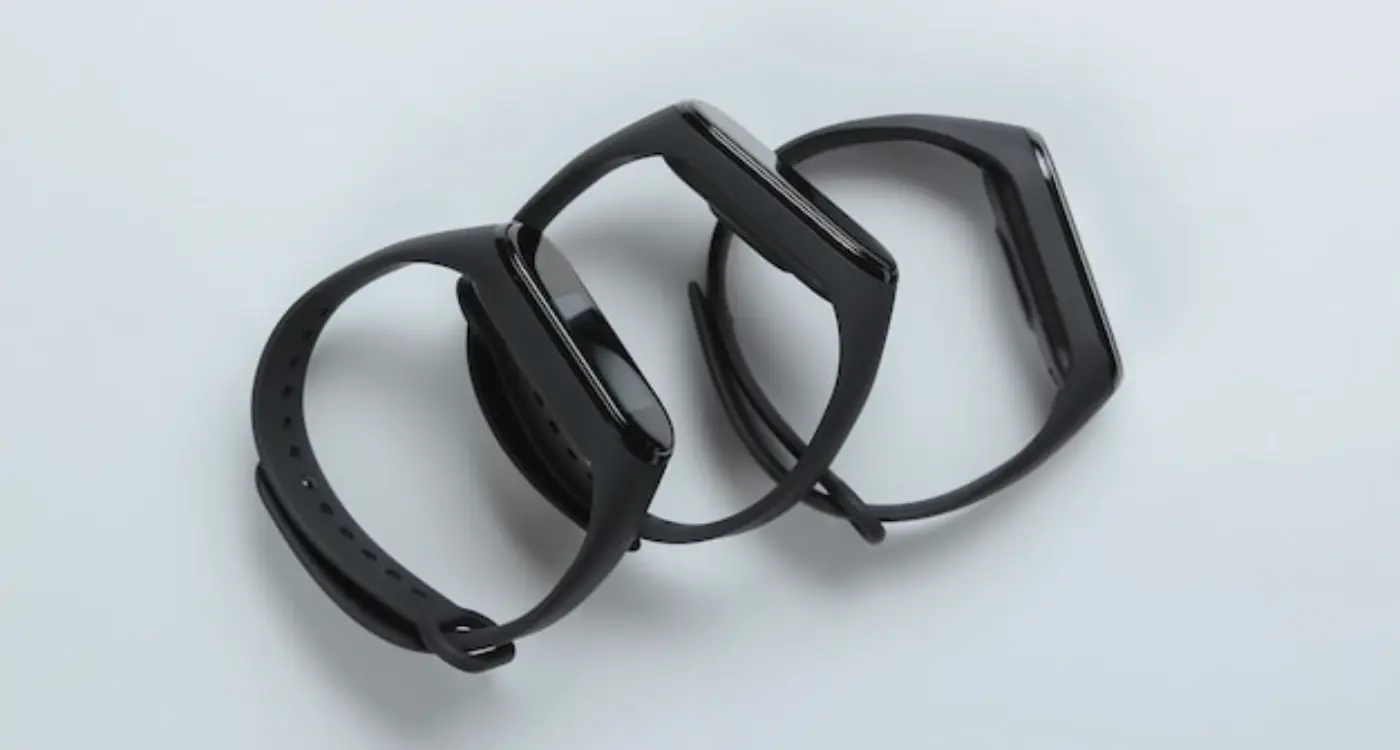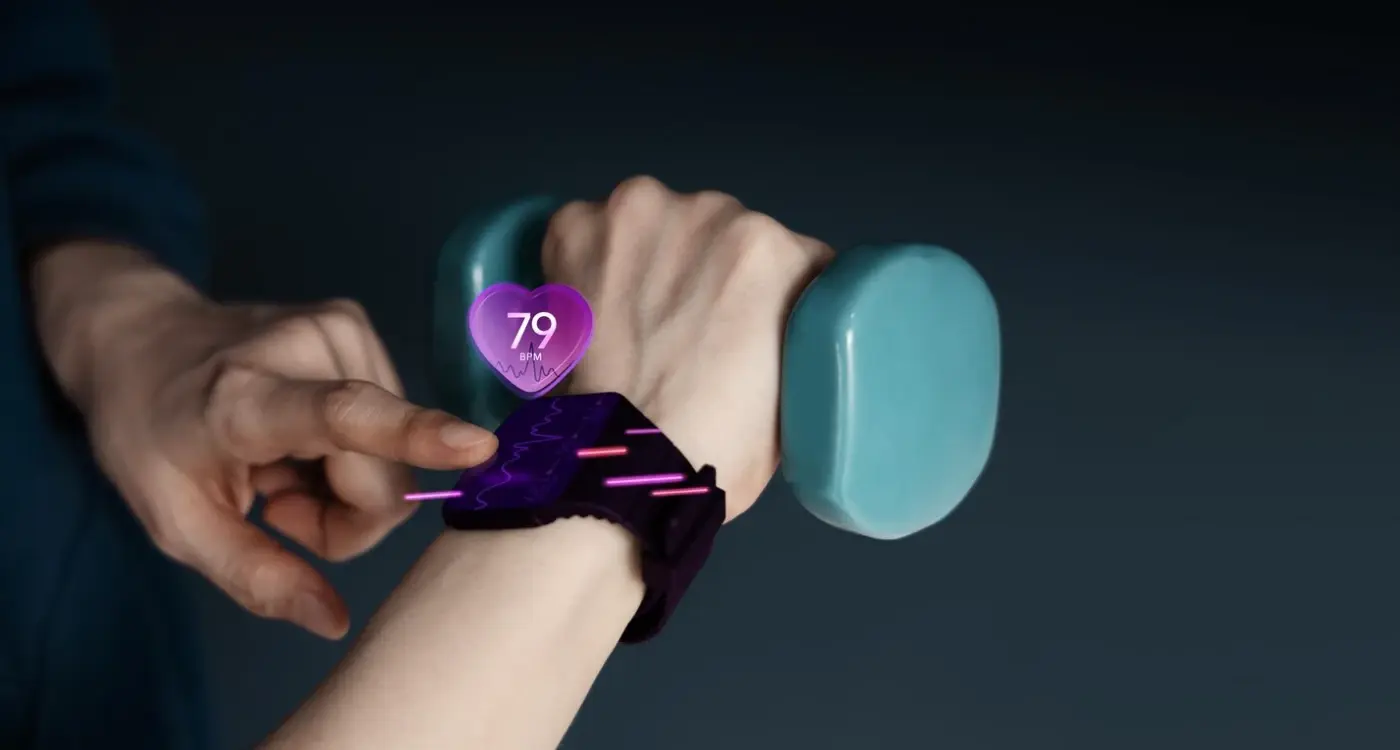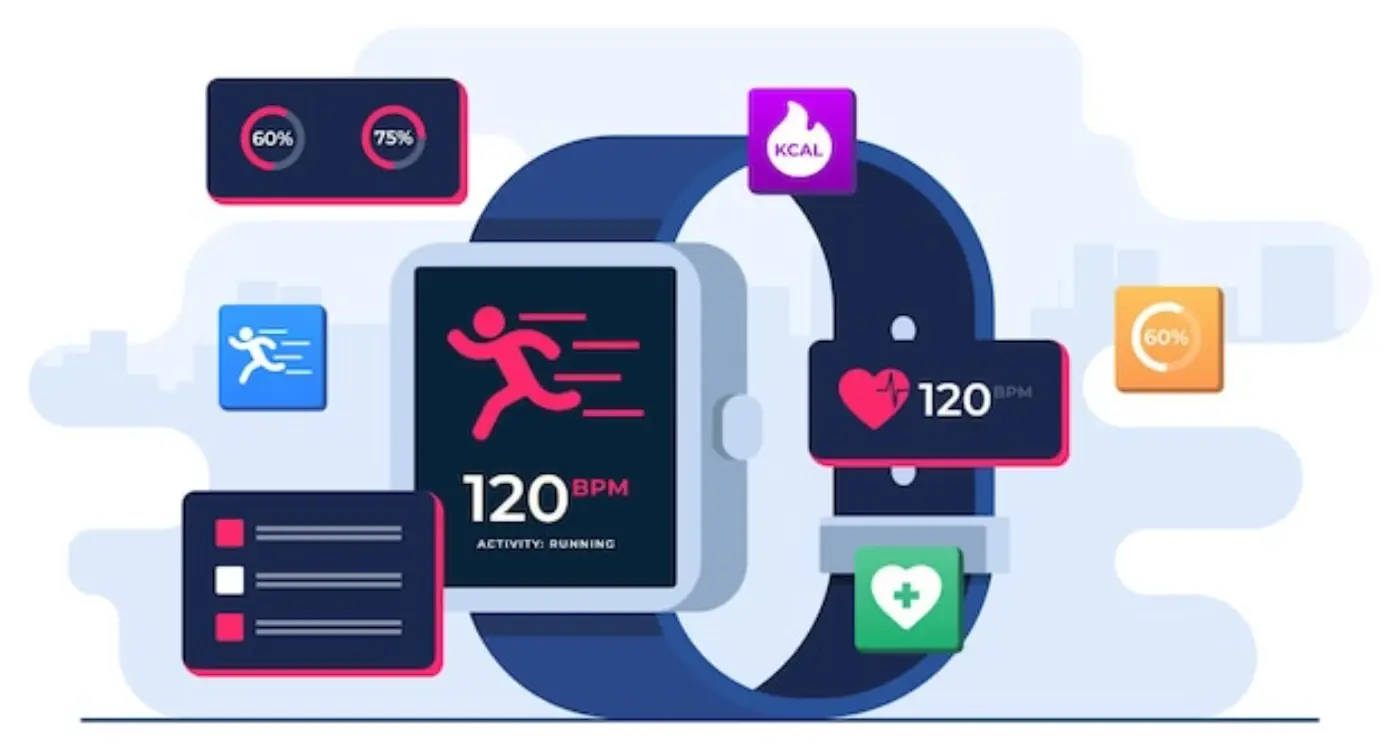What Security Measures Should Wearable Apps Include?
Wearable apps handle some of the most personal data you can think of—your heart rate, sleep patterns, location data, and daily habits. I've been building mobile apps for years now, and the shift towards wearable technology has brought security challenges that honestly keep me up at night sometimes. These tiny devices on our wrists and bodies collect information 24/7, which makes them incredibly valuable targets for anyone with bad intentions.
The thing is, most people don't realise just how much data their smartwatch or fitness tracker is actually collecting. Sure, you know it's tracking your steps and maybe your heart rate, but its also logging when you're active, when you're sleeping, where you go throughout the day, and even patterns about your daily routine. That's a goldmine of personal information that could be seriously damaging in the wrong hands.
The average wearable device collects over 3,000 data points per day about its user, creating an incredibly detailed picture of their personal life and habits.
What makes wearable security particularly tricky is that these devices have limited processing power and battery life—you can't just throw the same security measures at them that you'd use for a smartphone. But here's the thing: that doesn't mean we can compromise on protecting user data. I've seen too many wearable apps launch with basic security measures, only to face serious vulnerabilities later on. The key is understanding what specific risks wearables face and building targeted protections that actually work within the constraints of these devices. That's exactly what we'll cover in this guide.
Understanding Wearable Device Vulnerabilities
Wearables are basically computers you wear on your body, but here's the thing—they're often less secure than your phone or laptop. I've seen this firsthand when building apps for fitness trackers and smartwatches; the security challenges are genuinely different from traditional mobile development.
The biggest issue? These devices collect incredibly personal data—heart rates, sleep patterns, location tracking, even stress levels that can significantly impact user interactions—but they dont always have the processing power for robust security measures. It's a bit mad really; we're trusting our most private health information to devices that might struggle with basic encryption.
Common Security Weak Spots
Most wearable vulnerabilities fall into predictable categories. Bluetooth connections are often the weakest link; many devices use outdated pairing protocols that can be intercepted. Then there's data storage—some wearables store sensitive information locally without proper encryption, making them vulnerable if the device is lost or stolen.
Authentication is another problem area. Unlike phones with fingerprint scanners or face recognition, most wearables rely on simple PIN codes or proximity to your paired device. That's not exactly bank-level security for your medical data, is it?
- Weak Bluetooth encryption protocols
- Unencrypted local data storage
- Poor authentication methods
- Insecure cloud data transmission
- Lack of regular security updates
- Third-party app integration risks
But here's what worries me most—many wearable manufacturers treat security as an afterthought rather than a core requirement. They focus on battery life and features, then bolt on security measures later. When you're developing apps for these platforms, you need to assume the underlying device security might not be up to scratch and build your own protective layers accordingly.
Authentication and User Verification
Getting authentication right on wearables is bloody tricky—and I mean that in the most technical sense possible. These devices are small, they're always with us, and frankly they don't have the luxury of full keyboards for complex passwords. But here's the thing: wearable security can't be an afterthought just because the screen is tiny.
I've worked on fitness trackers that handle heart rate data and smartwatches that process payment information. The authentication methods we use need to balance security with practicality. Nobody wants to type a 12-character password on a watch face every time they check their step count, right?
Multi-Factor Authentication Options
The best approach combines several verification methods. Biometric authentication works brilliantly on wearables—fingerprint sensors, heart rate patterns, even the way someone walks can be unique identifiers. But you can't rely on just one method.
- Proximity authentication with paired smartphones
- Biometric verification (fingerprint, heart rate pattern)
- PIN codes for sensitive actions
- Time-based tokens for high-security applications
- Behavioural pattern recognition
Smart pairing is another layer that works well. The wearable stays unlocked when it's connected to the user's verified phone, but locks automatically when they're separated. It's simple but effective.
Set up automatic lock timers based on inactivity. If someone removes their fitness tracker and forgets to lock it, the device should secure itself within minutes.
One mistake I see often? Apps that ask for authentication every single time but then store everything in plain text once you're in. The authentication is only as strong as what happens after the user gets access. Make sure your verification actually protects something worthwhile, not just creates the illusion of security.
Data Encryption on Wearables
Right, let's talk about something that honestly makes my head spin sometimes—data encryption on wearable devices. It's one of those things that sounds dead complicated but is actually quite straightforward once you break it down. The main thing to understand is that wearables are constantly collecting incredibly personal data about users; heart rates, sleep patterns, location data, even stress levels. And all of that needs protecting.
Here's the thing though—wearables have limited processing power and battery life, which makes encryption a bit of a balancing act. You need strong enough encryption to keep the data safe, but not so heavy that it drains the battery or slows everything down. Most modern wearables use AES-256 encryption for data at rest (that's data stored on the device) and AES-128 for real-time processing. It's a compromise that works well in practice.
Types of Data That Need Encryption
Not all data on a wearable needs the same level of protection. Actually, that's something a lot of developers get wrong—they either encrypt everything (which kills performance) or they're too selective and leave gaps. From my experience, here's what definitely needs encrypting:
- Biometric data like heart rate variability and sleep stages
- Location tracking information and GPS coordinates
- Personal health records and medication reminders
- Authentication tokens and user credentials
- Payment information for contactless transactions
The tricky bit is implementing encryption that works across different platforms—iOS and Android handle it differently, and then you've got proprietary systems like Wear OS and watchOS. But here's what I've learned: start with the platform's built-in encryption tools first, then layer on additional protection where needed. Don't try to reinvent the wheel unless you've got a very specific reason to do so.
Secure Data Transmission
Getting data from your wearable to your phone or the cloud safely is where things get really tricky. I've seen too many apps that encrypt data beautifully on the device but then send it flying across the internet like a postcard that anyone can read. It's honestly one of the biggest security gaps in wearable apps today.
The problem is that wearables are constantly chatting—sending heart rate data, step counts, location information, sometimes even audio recordings. All of this sensitive stuff needs to travel through multiple networks before it reaches its destination. Without proper protection, you're basically broadcasting your personal health information to anyone who knows how to listen in.
Transport Layer Security Is Your Best Friend
Every single data transmission should use TLS (Transport Layer Security) as a minimum. But here's the thing—not all TLS implementations are created equal. You want TLS 1.2 or higher, and you need to make sure your app validates certificates properly. I've seen apps that technically use TLS but don't bother checking if the certificate is legitimate, which defeats the whole purpose.
The weakest link in wearable security isn't usually the device itself—it's what happens to your data when it leaves that device
For really sensitive health data, consider adding an extra layer of encryption on top of TLS. This means even if someone breaks the transport encryption, they still can't read the actual data without another key. It's like putting a locked box inside another locked box; sure, it's more work, but when we're talking about people's medical information, that extra effort is worth it.
API Security Matters Too
Don't forget about securing your API endpoints. Rate limiting, proper authentication tokens, and input validation all play a part in keeping transmitted data safe from tampering or interception attacks.
Privacy Controls and User Consent
Right, let's talk about something that keeps me up at night—privacy controls and user consent in wearable apps. I mean, these devices are literally strapped to people's bodies, collecting data 24/7. That's a massive responsibility we can't take lightly.
The thing is, wearables collect incredibly personal data. Heart rates, sleep patterns, location tracking, even stress levels. Users need to know exactly what you're collecting and why. But here's where most apps get it wrong—they bury this information in lengthy privacy policies nobody reads. Instead, implement what I call "contextual consent." When your app first tries to access heart rate data, explain right there why you need it and how it benefits the user. Keep it simple and honest.
Granular Control is Everything
Users should be able to pick and choose what data they share. Maybe someone wants sleep tracking but not location data? That should be their choice. I always build privacy dashboards that let users see exactly what data we've collected, modify their preferences, and even delete their information entirely. It's not just good practice—its the law in many places now.
Making Privacy Transparent
One approach that works brilliantly is showing users their data in real-time. When they can see what you're collecting and how it's being used to improve their experience, they're much more likely to consent. I've seen opt-in rates jump from 40% to over 80% just by making the value exchange clear and giving users proper control over their information.
Remember, balancing privacy protection with personalised experiences isn't just about compliance—it's about building trust. And trust is what keeps users coming back to your app.
Device Pairing and Connection Security
Getting wearable devices to talk to phones securely is trickier than most people think. I've seen far too many apps that treat Bluetooth pairing like it's just a friendly handshake between devices—but it's actually one of the biggest security weak points in the entire system.
The main issue? Most wearables use Bluetooth Low Energy (BLE) for connection, and the default pairing process is pretty basic. Sure, it works fine for connecting your headphones, but when we're talking about health data or personal information, we need something much stronger. The pairing process should include proper authentication checks, not just a simple "yes, connect" button.
Here's what I always build into wearable apps: encrypted key exchange during the initial pairing. This means the devices create their own secret code that only they know about. If someone tries to intercept the connection later, they won't be able to decode what's being sent back and forth. It's like having a private conversation in a crowded room—even if people can hear you talking, they can't understand what you're saying.
Connection security doesn't stop after the initial pairing either. The app needs to verify the device identity every single time they connect. I implement what's called "device fingerprinting"—basically, the app remembers specific details about the original wearable and checks these every time it connects. If something doesn't match up, the connection gets blocked automatically.
Always implement connection timeouts and automatic re-authentication. If a wearable has been disconnected for more than a few hours, make users verify their identity again before re-establishing the connection.
One thing that catches people out is connection hijacking. If your app doesn't properly secure the ongoing connection, someone nearby with the right tools can potentially jump in and pretend to be either the phone or the wearable. That's why I always use rolling encryption keys that change regularly during active sessions.
Regular Updates and Patch Management
Here's something that drives me mad—people treat wearable apps like they're set-and-forget devices. You wouldn't leave your house unlocked for months, so why would you leave your wearable app without security updates? Regular updates aren't just about adding new features; they're your first line of defence against emerging security threats.
I've seen too many wearable apps get compromised because developers didn't plan for ongoing security maintenance. The thing is, hackers don't take holidays. They're constantly finding new ways to exploit vulnerabilities, and wearable devices—with their limited processing power and often-overlooked security—make tempting targets.
Building an Effective Update Strategy
Your update strategy needs to balance security with user experience. Nobody wants their fitness tracker updating during a morning run, but waiting too long for security patches can leave users exposed. I always recommend implementing automatic background updates for security patches, while giving users control over feature updates.
When we develop wearable apps, we build in remote configuration capabilities from day one. This means we can push security fixes without requiring a full app update—bloody useful when you discover a vulnerability that needs immediate attention.
- Monitor security advisories for your development frameworks and third-party libraries
- Implement staged rollouts to catch issues before they affect all users
- Create rollback mechanisms for updates that cause problems
- Test updates across different device models and OS versions
- Maintain clear communication with users about security updates
The key is treating security updates as part of your ongoing responsibility to users, not just a nice-to-have feature. Your wearable app's security is only as strong as your commitment to keeping it current.
Compliance with Health Data Regulations
Right, let's talk about the elephant in the room—health data regulations. If your wearable app handles any kind of health information, you're stepping into some seriously regulated territory. And honestly? That's a good thing, even though it might feel like a proper headache when you're trying to get your app to market.
GDPR in Europe is probably the one most people know about, but there's also HIPAA in the States if you're dealing with medical data. The thing is, wearable apps often sit in this grey area where they're collecting health-related information but aren't technically medical devices. Heart rate, sleep patterns, step counts—it all sounds harmless enough, but regulators take this stuff quite seriously.
Data Classification and Storage Requirements
You need to understand what type of data you're actually collecting first. Is it just fitness tracking? That's one level of compliance. But if you're storing anything that could be considered medical information—blood pressure readings, medication reminders, symptoms tracking—then you're looking at much stricter requirements.
Health data is incredibly sensitive, and users trust us with some of their most personal information. Getting compliance right isn't just about avoiding fines; it's about maintaining that trust.
User Rights and Data Control
Under GDPR, users have the right to access their data, correct it, and delete it entirely. Your wearable app needs to make these rights easy to exercise—and I mean genuinely easy, not buried in some settings menu. Users should be able to export their health data in a readable format and take it elsewhere if they want to. It's their data, after all, not yours.
The penalties for getting this wrong can be massive. We're talking millions in fines for serious breaches. But more than that, losing user trust in the health space is basically game over for your app.
Conclusion
Right, so we've covered quite a bit of ground here—from authentication headaches to encryption nightmares and everything in between. After building wearable apps for years, I can tell you that security isn't just a box you tick at the end of development; it needs to be baked into every decision you make from day one.
The thing about wearables is that they're genuinely personal devices. More personal than phones, really. They sit on peoples wrists all day, tracking their heartbeats, their sleep patterns, where they go and what they do. That's a massive responsibility, and users are starting to understand just how much data these little devices collect. They want to know its being protected properly.
I've seen apps fail spectacularly because they treated security as an afterthought—one health app I know of had to shut down completely after a data breach exposed thousands of users medical information. It's not just about avoiding bad press; people's lives and privacy are in your hands.
But here's the thing that keeps me optimistic about this space: when you get security right, it actually becomes a competitive advantage. Users notice when an app handles their data responsibly, asks for permissions clearly, and gives them control over their information. They stick around longer, they trust you with more data, and they recommend you to friends.
Building secure wearable apps isn't easy—there are technical constraints, battery limitations, and user experience challenges that don't exist with traditional mobile apps. But honestly? That's what makes it interesting. Every project teaches me something new about balancing security with usability, and the technology keeps getting better.
Share this
Subscribe To Our Learning Centre
You May Also Like
These Related Guides

How Should You Approach Typography in Wearable App Design?

What Happens When Your Wearable App Loses Connection?



